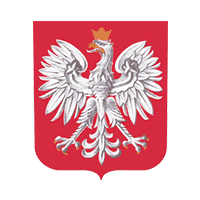Martin ŠTEMBERKA, Vítězslav URBANEC
In Czech Republic the question of mining damage is solved in the Mining Act, the Mining Activity Act and the Civil Code. Mining damage is understood as damage to the property of the third parties, which was caused by mining activity. Compensation for damage is typically by compensation, financial compensation or restoration. It is possible to cover damage not only after its occurrence but also in advance, before it will happen. Settlement of mining damage is a matter of agreement between the organization and the injured party; any disputes are resolved by courts. To ensure a sufficient quantity of money for the settlement of mining damages, so-called “reserves” were introduced. They must correspond to the needs of the actual execution of the works. Closely related to the issue of mine damage is the issue of sanitation and restoration. After the finishing mining the organization is obliged to carry out remediation and recultivation. When submitting an application for a mining permit, the organization must estimate the expected costs of these activities and prepare a remediation and recultivation plan. Reserves are created too. In the case of damages caused by abandoned underground mine works or quarries whose original operator or legal successor does not exist or is unknown (an old mining work), competences of the authorities are divided between the Ministry of the Environment (detecting and registering old mining works as well as securing or liquidation of them) and the mining administration (permitting of and supervision over securing or liquidation of old mining works). In the event, when undesirable manifestations of old mining works (eg. sinkholes) need to be solved operatively, the authorities of crisis management and of the integrated rescue system (mainly municipal authorities, fire brigade, etc.) come into play.
Adam MIREK, Tomasz MNICH, Małgorzata WAKSMAŃSKA
According to the Geological and Mining Law, a landowner cannot object to the dangers caused by the
movement of a mining plant, which is being conducted in accordance with the law. However, he can demand compensation for the damage caused by this movement. It is up to the injured party to choose how to repair it. The entity responsible for the damage is the entrepreneur responsible for the operation of the mining plant resulting in the damage or its legal successor. In their absence, the State Treasury, represented by the competent mining supervisory authority, is responsible for the damage. Claims for compensation for damage caused by the mining plant's movement are first pursued through a settlement procedure - the injured party applies to the State Treasury (the director of the relevant Regional Mining Authority) for a settlement covering his claim. It is the duty of the director of the relevant Regional Mining Authority to take steps to investigate the legitimacy of the claim filed. Exhaustion of this procedure is a prerequisite for pursuing the claim before a common court in accordance with the rigors of the Code of Civil Procedure.
Jerzy MAJCHRZAK
The JSW Capital Group, as one of the few in Poland, has been conducting an integrated estimation of
the carbon footprint of the organization and its two main products - coal and coke - since 2017. Carbon footprint determination is performed based on the GHG Protocol Corporate Standard and Product Standard. As of 2018, the JSW Group reports the value of the organization's carbon footprint and the measures taken to reduce it in its activity reports and integrated report. In 2021, the organization's carbon footprint of the entire JSW Group was 7.92 million Mg CO2e. Methane emissions account for 74% of the JSW Group's carbon footprint. Investments are therefore being made to reduce its emissions. Disclosure leads to an understanding of climate change risks, better risk management and more informed strategic planning. It can also contribute to a lower cost of capital and a diversified investor base. Balancing emission sources makes it possible to determine at which stage of production and what greenhouse gas emissions are predominant, and to decide what measures to implement to reduce them. Optimization allows for real savings, and responsibility for one's footprint increases JSW's value in the eyes of contractors and customers.



